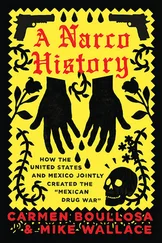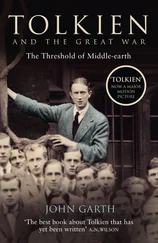The incident seems a perfect example of the creative unconsciousness: the boring job, the state of combined surface concentration and deeper lack of interest, the sudden relaxation which allows a message to force its way through from some unknown area of pressure. It is reminiscent of the flashes of insight which solve scientists’ problems in dreams (like von Kékulé the chemist and the snake with its tail in its mouth). But what has philology to do with an event so mysterious and so personal?
Tolkien had no opinion to offer himself. In a letter in the Observer (20 February 1938), he answered speculation by saying ‘I do not remember anything about the name and inception of the hero’, and denied (without total certainty) that the word ‘hobbit’ could have come from prior reading in African exploration or fairy-tale, as had been suggested. He thought that earlier writers’ hobbits, if they existed, were probably ‘accidental homophones’, i.e. the name was the same but the thing was not. Much later, in a letter he seems never to have posted (Letters , pp. 379–87), he observed that though he could often remember acquiring names this process played little part in the construction of stories. It is somehow typical that the OED should have claimed (Times , 31 May 1977) to have identified Tolkien’s ‘source’ and ‘inspiration’ in J. Hardy’s edition of The Denham Tracts, Vol. II (1895), which declares that ‘The whole earth was overrun with ghosts, boggles … hobbits, hobgoblins’. The word ‘hobbit’ is there, but in a run of distinctly insubstantial creatures which hardly correspond to Tolkien’s almost pig-headedly solid and earthbound race. Words are not things: the name ‘hobbit’ may seem to be for the researcher, a dead-end.
Even dead-ends have their uses, though (see below). This particular one prompts several thoughts. One is that although Tolkien accepted the word as coming from outside, not being rooted in antiquity at all, he nevertheless did not rest until he had worked out an acceptable etymology for it. ‘In a hole in the ground there lived a hobbit’ is of course the first sentence of The Hobbit. Not quite the last sentence, but on the last page of the last appendix of The Lord of the Rings , is the note on the word ‘hobbit’ which gives its derivation, viz. from Old English *hol-bytla , ‘hole-dweller’ or ‘hole-builder’. Holbytla is an ‘asterisk word’. It was never recorded, but nevertheless could, is even on the whole likely to have existed, like *dvairgs. Furthermore it makes the magic sentence of inspiration into a tautology: ‘In a hole in the ground there lived a hole-liver…’ What else would you expect? The implication is that the inspiration was a memory of something that could in reality have existed, and that anyway conformed to the inflexible rules of linguistic history: as a word ‘hobbit’ was more like ‘dwarves’ than ‘elfin’.
The next point is that Tolkien did admit one possible source in Sinclair Lewis’s novel Babbitt (1922), the story of the near-disgrace and abortive self-discovery of a complacent American businessman; to this theme the journey and the nature of Bilbo Baggins show some correspondence. But the source that Tolkien emphatically rejected is the word ‘rabbit’, of which so many critics have been reminded. ‘Calling Bilbo a “nassty little rabbit” was a piece of vulgar trollery’, he wrote, ‘just as “descendant of rats” was a piece of dwarfish [ sic ] malice’ (Observer , 20 February 1938). ‘Certainly not rabbit’ he affirmed later. Internal evidence runs against him here, however, for it is not only the trolls who think simultaneously of Bilbo and rabbits. Bilbo makes the comparison himself in chapter 6 of The Hobbit, when he sees the eagle sharpening its beak and begins ‘to think of being torn up for supper like a rabbit’. Three pages later the same thought occurs to the eagle, ‘You need not be frightened like a rabbit, even if you look rather like one.’ Thorin shakes Bilbo ‘like a rabbit’ in chapter 16, and much earlier Beorn – admittedly a rude and insensitive character – pokes Mr Baggins in the waistcoat and observes ‘little bunny is getting nice and fat again’ (p. 123). He is in a sense repaying the insult Bilbo offered earlier (p. 109), when he thought Beorn’s ‘skin-changing’ meant he was ‘a furrier, a man that calls rabbits conies, when he doesn’t turn their skins into squirrels’. But the multiplicity of names gives a further clue to Tolkien’s real thoughts, incubating since 1915 and the neologism ‘coney-rabbits’ in ‘Goblin Feet’.
The fact is that ‘rabbit’ is a peculiar word. The OED can find no ultimate etymology for it, nor trace it back in English before 1398. ‘Coney’ or ‘cunny’ is little better, going back to 1302, while ‘bunny’ is a pet-name used originally for squirrels, as it happens, and not recorded till the seventeenth century. The words for ‘rabbit’ differ in several European languages (French l apin, German kaninchen ) , and there is no Old English or Old Norse word for it at all. These facts are unusual: ‘hare’ for instance is paralleled by Old English hara, German hase , Old Norse heri , and so on, while the same could be said for ‘weasel’ or ‘otter’ or ‘mouse’ or ‘brock’ or most other familiar mammals of Northern Europe. The reason, of course, is that rabbits are immigrants. They appeared in England only round the thirteenth century, as imported creatures bred for fur, but escaped to the wild like mink or coypu. Yet they have been assimilated. The point is this: not one person in a thousand realises that rabbits (no Old English source) are in any historical way distinct from mice (O.E. mýs ) or weasels (O.E. weselas ) , while the word is accepted by all as familiar, native, English. The creature has further established itself irreversibly in the folk-imagination, along with wise owls (O.E. úlan ) and sly foxes (O.E. fuhsas ) . But if an Anglo-Saxon or Norseman had seen one he would have thought it alien if not bizarre. Rabbits prove that novelties can be introduced into a language and then made to fit – of course as long as one exhibits due regard to deep structures of language and thought. ‘If a foreign word falls by chance into the stream of a language’, wrote Jacob Grimm, ‘it is rolled around till it takes on that language’s colour, and in spite of its foreign nature comes to look like a native one.’ 10
Now this situation of anachronism-cum-familiarity certainly has something to do with hobbits. The first time that Bilbo Baggins appears in close focus he is ‘standing at his door after breakfast smoking an enormous long wooden pipe’. Smoking later appears as not just a characteristic of hobbits, but virtually the characteristic, ‘the one art that we can certainly claim to be our own invention’, declares Meriadoc Brandybuck ( LOTR p. 8). But what are they smoking besides pipes? ‘Pipeweed, or leaf’ , declares the Lord of the Rings Prologue firmly. Why not say ‘tobacco’, since the plant is ‘a variety probably of Nicotiana’ ? Because the word would sound wrong. It is an import from some unknown Caribbean language via Spanish, reaching English only after the discovery of America, sometime in the sixteenth century. The words it resembles most are ‘potato’ and ‘tomato’, also referring to new objects from America, eagerly adopted in England and naturalised with great speed, but marked off as foreign by their very phonetic structure. ‘Pipeweed’ shows Tolkien’s wish to accept a common feature of English modernity, which he knew could not exist in the ancient world of elves or trolls, and whose anachronism would instantly be betrayed by a word with the foreign feel of ‘tobacco’. Actually Bilbo does use ‘tobacco’ on page 6 of The Hobbit , and Gandalf mentions ‘tomatoes’ not much later. In the first edition. The third changes ‘cold chicken and tomatoes’ to ‘cold chicken and pickles’, 11 and after that the foreign fruit is excluded. ‘Potatoes’ stay in, being indeed the speciality of Gaffer Gamgee, but his son Sam has a habit of assimilating the word to the more native-sounding ‘taters’ – Tolkien notes elsewhere that the word was borrowed into colloquial Welsh from colloquial English as tatws, in which form it sounds much less distinctive (‘EW’, p. 34). But in fact the scene in which Sam discusses ‘taters’ with Gollum ( LOTR p. 640) is a little cluster of anachronisms: hobbits, eating rabbits (Sam calls them ‘coneys’), wishing for potatoes (‘taters’) but out of tobacco (‘pipeweed’). One day, offers Sam to Gollum, he might cook him something better – ‘fried fish and chips’. Nothing could now be more distinctively English! Not much would be less distinctively Old English. The hobbits, though, are on our side of many cultural boundaries.
Читать дальше












